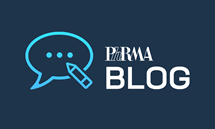Lawmakers in numerous state capitals — including Minnesota — continue to debate reforms intended to lower the cost of prescription drugs for patients. We agree, out-of-pocket costs for patients are too high. As we’ve said before, patients need help affording their medicines. Unfortunately, organizations backed by the insurance industry — have lobbied for state lawmakers to embrace so-called prescription drug affordability boards. It’s no surprise that their path provides government bureaucrats the power to set prices for innovative medicines without addressing insurer and PBM roles in determining prescription drug costs.
Here are a few reasons why government price-setting boards will not help Minnesotans and remain unproven in other states across the country:
- Threaten the development of new medicines. Government price setting could result in fewer cures and treatments. For example, the Inflation Reduction Act’s (IRA) government price setting provisions are already impacting R&D decisions in harmful ways. But you don’t have to take our word for it. Minnesota Oncology — a leading provider of cancer care — warned that a state board could “prevent lifesaving and life-altering drugs from ever coming to market, reducing patient access to current and future treatment.”
- Fail to deliver lower costs to patients. States like Maryland and Colorado have already spent years trying to establish government boards with little to show for their efforts. These states have spent millions of dollars standing up handpicked bureaucrats, yet so far, they haven’t delivered any savings to date for patients at the pharmacy. Instead, for example, concerns about inaccurate data and questions about a state’s ability to implement price limits have plagued Colorado board members.
- Give a free pass to middlemen and health insurers. There is growing recognition that abusive practices by pharmacy benefit managers (PBMs) and health insurers are making medicines unaffordable. PBMs — and any health insurers that own one — reap large profits by shifting higher costs onto patients. Experts have warned that PBMs may prefer medicines with higher prices over lower cost alternatives because they may make more money, and they often refuse to share rebates and other savings directly with patients. Government boards let middlemen off the hook, ignoring the reasons why patients often can’t afford their treatments.
- Jeopardize patient access to lifesaving treatments. Government price setting allows unelected bureaucrats to come between patients and their medicines, threatening access to lifesaving care. For example, the IRA is hurting the ability of seniors to access their medicines under Medicare. This reaffirms previous research that found the IRA’s price setting scheme is jeopardizing seniors’ access to treatment options.
There are better ways to lower the cost of prescription drugs that protect access to medicines and the development of new treatments. For example, states can follow the lead of Arkansas and West Virginia, which now require insurers and PBMs to share savings with patients at the pharmacy counter.
To learn more about solutions lawmakers can pursue to lower costs and increase health care access, visit PhRMA.org/States.



